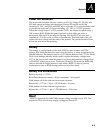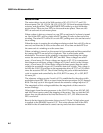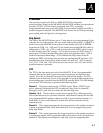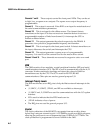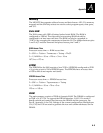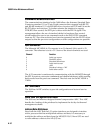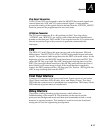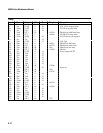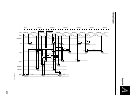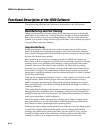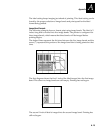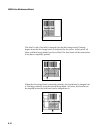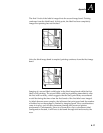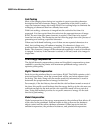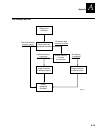
3600 Printer Maintenance Manual
A-14
Functional Description of the 3600 Software
This section describes the basic software functionality of the 3600 printer.
Band Buffering and Font Caching
Image band buffering and font caching allow Intermec printers to image and
print labels at the same time. Virtually any label length can be accommodated
due to the circular system of using image memory. After an image band has
printed, it is reused to image the next part of the label, which means the printer
can print labels using less memory.
Image Band Buffering
Printer throughput is affected by the number of image bands and the print
speed. If imaging is fast enough, throughput will be maximized by using the
least number of image bands with the fastest speed (assuming the fastest speed
delivers the desired print quality).
Some printers use a fixed size, contiguous portion of RAM for imaging. In
these cases, a label is imaged in its entirety before printing commences. During
printing, there is no contention with imaging, so the print speed can remain
constant. However, if the label is fairly complex, the delay before printing
becomes very noticeable. In addition, printing of the label must finish before a
second label is imaged. The combination of these delays impede total printer
throughput. Another drawback is that the maximum length of a label is limited
by the size of the RAM.
With the use of image band buffers (1 band = 1 inch), labels are divided up and
imaged band by band. Printing begins after the selected number of image
bands is imaged, minimizing the delay before printing. Imaging of a second
label can begin while a first is still printing. In addition, the length of a label is
virtually unlimited.
With image band buffering, time becomes a critical resource since printing and
imaging take place simultaneously. Sometimes, a label cannot be imaged fast
enough to keep up with the print speed. The 3600 printer maintains a constant
print speed regardless of label complexity.
Label throughput can be fine-tuned by selecting the number of image bands
and print speed for a specific label format. Selecting image bands determines
how much of a label is preimaged before printing starts.
Selecting too many image bands can lead to print delay. If too few image bands
are selected, imaging falls behind the print speed. If imaging falls behind
printing, the printer stops printing the label, sets the speed to 2 ips, sets the
number of image bands to the maximum, and then reprints the label. This
condition is known as an image rate error or an image overrun error.



